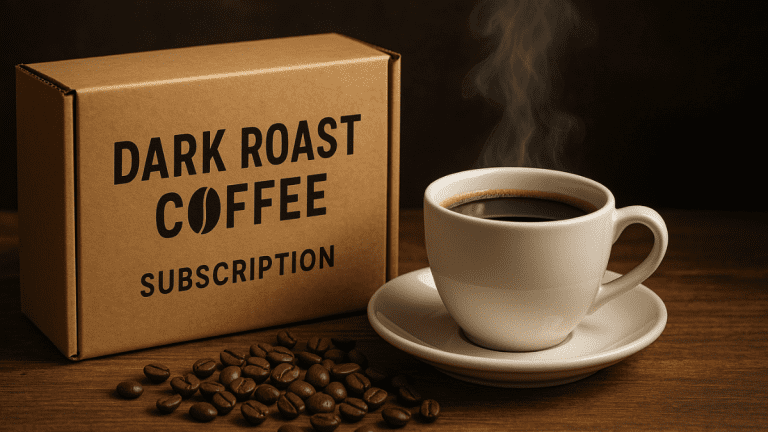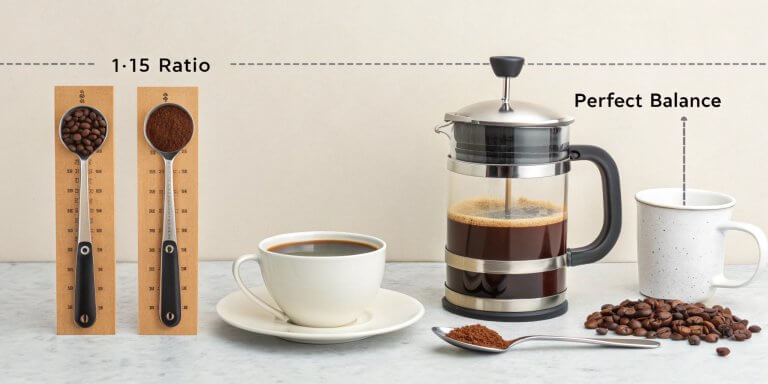
Let’s face it: We all have those mornings when the thought of grinding beans, fiddling with filters, and waiting for a pot of coffee to brew feels like climbing Mount Everest. That’s where the beauty of coffee powder comes in! It’s the superhero of the coffee world, ready to rescue you from the clutches of a time crunch and deliver a caffeine fix in a flash. Whether you crave a simple cup of instant or want to experiment with espresso-infused treats, there’s a type of coffee powder out there waiting to become your new best friend. In this guide, we’ll break down all the different types of coffee powder, from the familiar to the more adventurous, so that you can find the perfect match for your taste and brewing style because everyone deserves a coffee routine that’s as unique as they are.
What is Coffee Powder?
So, we’ve established that coffee powder is a lifesaver for busy mornings, but what exactly is it? Coffee powder is brewed coffee that magically transforms into a dry, powdery form.
Think of it as a coffee concentrate—all the flavor minus the water. This makes it super easy to whip up a cup whenever the caffeine cravings hit—add hot water and stir!
Now, you might wonder, “How’s coffee powder different from those bags of coffee beans or coffee grounds I see at the store?” Well, coffee beans are the starting point—the raw material, so to speak. They’re roasted and then ground into coffee grounds used for traditional brewing methods. On the other hand, coffee powder takes those grounds, brews them, and then removes the water to create a concentrated powder.
There are two main ways this dehydration magic happens:
Exploring the Different Types of Coffee Powder
Let’s dive into the heart—the incredible variety of coffee powder types! Each brings something unique, from quick fixes to special brews that make you feel like a barista. Ready to find your perfect match? Let’s explore!
Instant Coffee Powder
Think “instant coffee powder,” and you probably picture those little jars or packets promising a cup of joe in seconds. You’re not wrong! That’s the magic of this type of coffee powder—it’s finely ground and dissolves in hot water. Instant coffee powder is made from dehydrated coffee extract, brewed from ground coffee beans, just like traditional coffee but with a higher concentration.
The pros are the speed and convenience. It’s perfect when you’re rushing or don’t have fancy equipment. Plus, it lasts forever on the shelf! Instant coffee has a longer shelf life than other coffee powder types.
Cons? Some instant coffee powders might not win any awards for the most nuanced flavor. But hey, there are some decent ones out there! The high heat used in the spray-drying process may affect the taste. The fine dust-like coffee particles produced may have a burnt flavor.
There are two main types of instant coffee powder:
Pro tip: A dash of sweetener, a sprinkle of cinnamon, or even some frothed milk can take your instant coffee from “meh” to “mmm” in a flash! You can also improve the taste of instant coffee by using high-quality water and adjusting the coffee-to-water ratio to your liking.
Espresso Powder
Espresso powder is like the superhero of coffee powders. It’s made from finely ground, dark-roasted beans, giving it a punch of flavor and caffeine that’ll wake you right up. Espresso powder is usually made from Arabica beans, known for their smooth and flavorful taste. Espresso powder is more concentrated than regular instant coffee. It is also darker and softer. The caffeine level is also higher.
This stuff isn’t just for espresso shots, either. It’s fantastic for baking! Think rich brownies, decadent tiramisu, and even savory dishes that need a little coffee kick. Some specific uses for espresso powder include:
Filter Coffee Powder
Filter coffee powder is your go-to for drip coffee makers. Its medium-coarse grind lets the water work its magic, extracting all those lovely flavors. This grind size suits it for various drip brewing methods, offering a smooth and aromatic flavor.
Bonus: You can experiment with the coffee-to-water ratio. Want something strong? Use more powder. Prefer a lighter brew? Dial it back. You’re in control!
Recommendations? You can find excellent filter coffee powder from brands like XYZ Coffee Powder for a balanced flavor, ABC Coffee Powder for an affordable option, or Premium Blend Coffee Powder for a more luxurious experience.
French Press Coffee Powder
A French press is all about steeping coarsely ground coffee beans in hot water to create a truly bold and flavorful cup. French press coffee powder is specifically ground to perfect that steeping process. The coarse grind ensures the best extraction without any bitterness, and it allows for a longer steeping time, releasing the full-bodied taste through immersion brewing.
Here’s how to make your French press experience even better:
That’s it! With the right grind and patience, you’ll enjoy a satisfying cup of French press coffee in no time.
Other Specialty Coffee Powders
Beyond the familiar instant, espresso, and filter coffee powders, a whole world of specialty coffee powders is waiting to be explored! These unique varieties offer exciting flavors and brewing methods, perfect for adventurous coffee lovers:
So step outside your coffee comfort zone and try something new! You might discover your new favorite brew.
Factors to Consider When Choosing Coffee Powder
Finding your perfect coffee powder is like embarking on a flavor adventure. But with so many options, it’s easy to feel lost in a sea of beans, roasts, and grinds. Fear not! This guide will equip you with the knowledge to navigate the world of coffee powder like a pro.
The Importance of Coffee Bean Selection
Not all coffee beans are created equal. Two popular types you’ll encounter are:
Many coffee powders use blends, which combine different beans to create unique flavor profiles. Think of it as a coffee symphony—each bean contributes to creating a harmonious whole!
Understanding Roast Levels
Roasting is like bringing out the hidden personality of the bean. Here’s how it affects your coffee powder:
Grind Size and Its Influence on Brewing
We’ve discussed this before, but it’s worth repeating: grind size is crucial. It determines how much surface area of the coffee is exposed to water, which affects extraction. Here’s a cheat sheet:
Additional Considerations
You’ve mastered beans, roasts, and grinds! Here are a few more things to keep in mind:
Now, go forth and conquer the world of coffee powder! With this guide, you’re ready to find the perfect blend, roast, and grind to suit your unique taste and lifestyle.
Conclusion
From the instant convenience of coffee powder to the rich, nuanced flavors of specialty blends, there’s a coffee powder out there for everyone. Whether you’re a fan of bold espresso, smooth drip coffee, or the unique experience of Turkish coffee, the options are practically endless!
The best type of coffee powder ultimately comes down to your preferences and brewing method. Factors like bean type (Arabica or Robusta), roast level, and grind size all play a part in shaping the final flavor of your cup. Don’t be afraid to experiment! Trying different types of coffee powder is the best way to discover the perfect match for your taste and lifestyle. So go ahead, explore the world of coffee powder, and unleash your inner barista!






